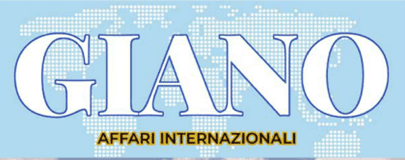Author: Vision & Global Trends – 12/12/2024

Call for Papers for a Collective Volume in the Series GIANO – International Affairs
GEOPOLITICS AND GEOGRAPHY OF INNOVATION. The challenges of theories and practices of innovation in the age of multipolarism (edited by Stefano De Falco and Tiberio Graziani)
In an international landscape characterized by complexity and turbulence, there is a pressing need to analyze the driving forces that have shaped the development of industrial societies. Among these, innovation undoubtedly holds a central role, manifested in various forms ranging from technological to process innovation. It serves not only as a driver of economic and social progress but also as a critical element for addressing global challenges, constantly redefining models of production, organization, and interaction among individuals, institutions, and territories.
For this purpose, Giano – International Affairs invites academics, researchers, and professionals to contribute to an in-depth exploration of innovation as a driving force behind contemporary global transformations.
This volume of GIANO is published under the patronage of:
- Società Italiana di Geopolitica – a project by Vision & Global Trends
- AICTT – Italian Association for the Culture of Technology Transfer
The collective volume aims to investigate the multiple dimensions of innovation in diverse contexts, examining its theoretical foundations, practical implications, and geopolitical significance.
Suggested Topics and Themes:
- THEORY AND CRITIQUE OF INNOVATION
- Innovation as ideology
- Historical evolution of the concept
- Determinism or technological possibilism?
- INNOVATION AND SOCIAL CONTEXTS
- Innovation in industrial societies
- Innovation in non-industrial societies
- Innovation in a changing world
- REGIONAL AND GLOBAL PERSPECTIVES
- Innovation and the West: Industrial concentration vs. regional specialization
- Innovation and the Global South: Challenges and opportunities
- The “paradox of the periphery” in Europe, innovating and developing
- INNOVATION AND KEY ACTORS
- The role of large transnational corporations in defining innovation
- International cooperation for innovation
- Innovation and public administration
- Innovation and critical infrastructure
- CASE STUDIES
- Transnational Policies: Comparative analysis of regulatory frameworks such as the European Union, UK, USA, China, India, the Eurasian Economic Union, and others
- National Policies: Innovation strategies in countries such as China, with Singapore as a unique case
- Territorial Policies: Innovation, development, and the rise of smart cities
- Dynamics of innovation and controversies in the United Arab Emirates
Guidelines
Contributions may include theoretical analyses, empirical studies, or comparative perspectives on the proposed themes. Interdisciplinary approaches and contributions from various academic and professional fields are encouraged and welcomed.
Submission Instructions
Please submit an abstract in English (maximum 300 words), three keywords, and a brief biography, indicating the proposed topic and theme. Contributions may be written in Italian, English, French, or Spanish and will undergo a peer review process.
Deadlines:
- Abstract Submission: By January 15 (to: tibgraziani@gmail.com)
- Notification (Acceptance, Revision, or Rejection): By February 15
- Final Article Submission: By March 30
- Notification of Revisions (if any): By May 15
- Final Submission for Publication: By June 15
Note: As this is a scientific publication, no remuneration will be provided to authors for their articles, nor will any fees be charged for publication.
Contact: For further information, please contact Tiberio Graziani at tibgraziani@gmail.com
Formatting Requirements
Each article must include the following metadata in English: title, abstract, three keywords. The article should display the general title at the top, followed by the name(s) of the author(s) and their affiliation(s). It may be divided into chapters or titled sections, including hierarchical sublevels.
- Font: Book Antiqua, size 12, justified alignment.
- Title: Size 14, bold; chapter titles in bold; subtitles in bold italic; lower hierarchy titles in simple italic.
- Spacing: Single-spaced, no fixed spacing above or below paragraphs.
- Images: JPG format, black and white, embedded in the text.
- Tables and Graphs: Treated as images and embedded in the text.
Citations and References
Direct quotations must always be placed within quotation marks and set in regular font. Quotes longer than 200 characters should be placed as a standalone paragraph, indented, in font size 11, without quotation marks.
References follow the author-date citation system (e.g., Author, Year, Page). At the end of the text, a bibliography must be included.
Bibliography Examples:
- Books: Author(s), Year, Title, Location, Publisher.
- Articles: Author(s), Year, Title, in Journal Name, Volume(Issue), Page Range.
- Book Chapters: Author(s), Year, Title, in Editor(s), Book Title, Location, Publisher.
- Edited Volumes: Editor(s), Year, Title, Location, Publisher.
